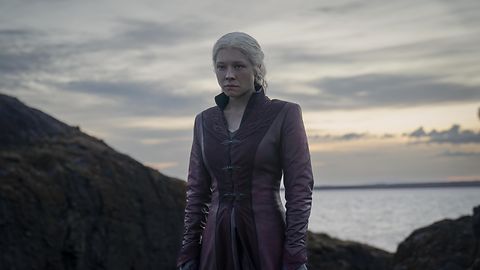The second TV series in the “A Song of Ice and Fire” franchise, based on books by George R. R. Martin, “House of the Dragon” is set around 200 years before the events in HBO’s hugely successful original series, “Game of Thrones.” Continuing the turbulent story of House Targaryen, season two was filmed at Warner Bros. Studios, Leavesden, in the UK, and on location in Spain and Wales. Cinematographer PJ Dillon ASC, ISC shot episodes one and four, selecting the equipment for the series and setting the look. Subsequent episodes were shot by Alejandro Martínez AMC; Catherine Goldschmidt BSC; and Vanja Černjul ASC, HFS.
New format, new camera, new lenses
PJ Dillon wasn’t involved in the first season of “House of the Dragon,” but was recruited by the showrunners for season two because of his previous work on “Game of Thrones.” He says, “I thought that all the DPs on season one did amazing work, especially Fabian Wagner ASC, BSC, who set the look. It was one of the best-looking shows on TV, so my brief was to continue the overall look of the ‘Song of Ice and Fire’ world, while maintaining the quality of cinematography that had been established on season one. The only additional thing was that there had been feedback from some viewers about season one looking a little bit dark at times, and HBO wanted to address this without compromising the established look of the show, so we looked closely at that but in the end any shift was actually very slight.”






